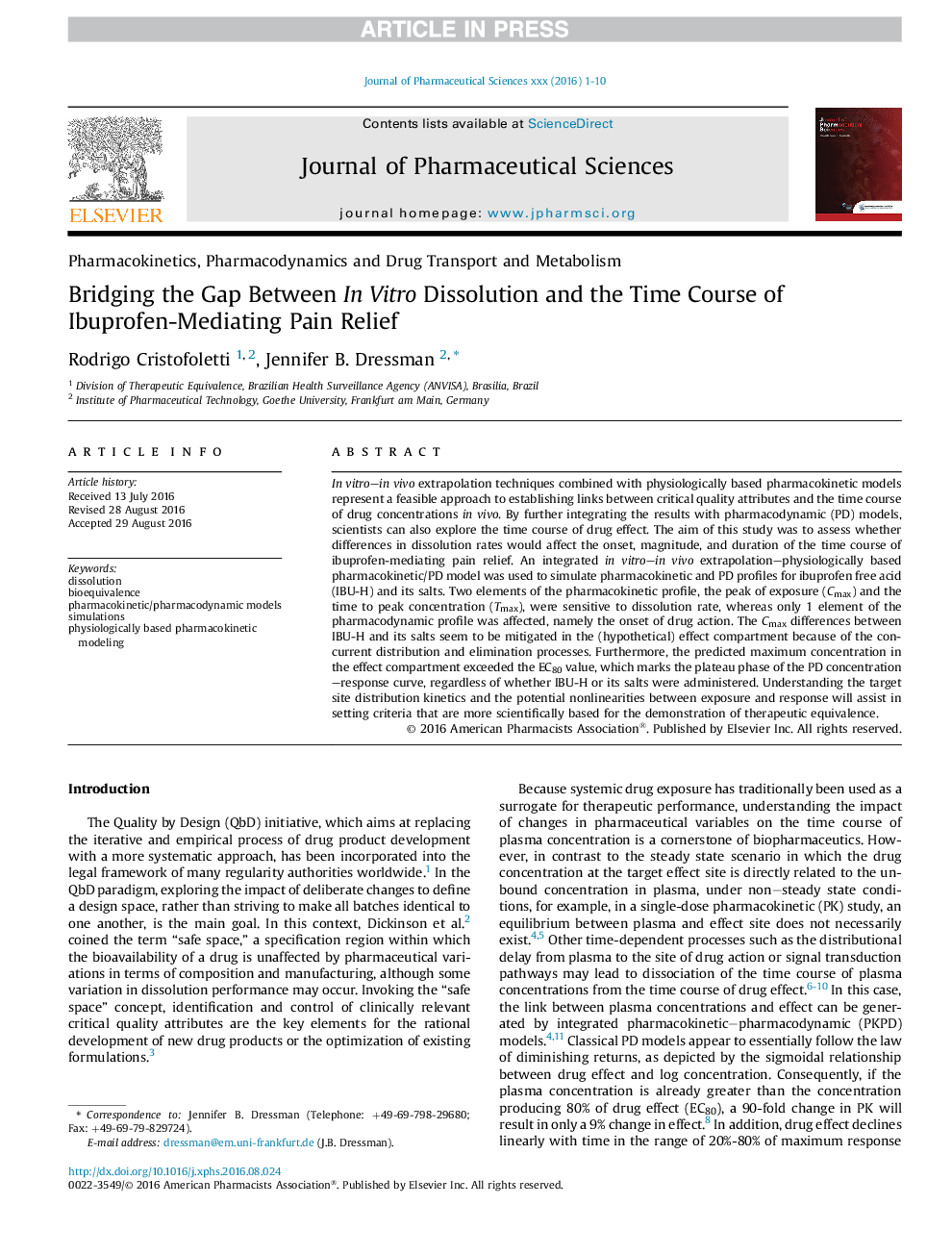| Article ID | Journal | Published Year | Pages | File Type |
|---|---|---|---|---|
| 8514785 | Journal of Pharmaceutical Sciences | 2016 | 10 Pages |
Abstract
In vitro-in vivo extrapolation techniques combined with physiologically based pharmacokinetic models represent a feasible approach to establishing links between critical quality attributes and the time course of drug concentrations in vivo. By further integrating the results with pharmacodynamic (PD) models, scientists can also explore the time course of drug effect. The aim of this study was to assess whether differences in dissolution rates would affect the onset, magnitude, and duration of the time course of ibuprofen-mediating pain relief. An integrated in vitro-in vivo extrapolation-physiologically based pharmacokinetic/PD model was used to simulate pharmacokinetic and PD profiles for ibuprofen free acid (IBU-H) and its salts. Two elements of the pharmacokinetic profile, the peak of exposure (Cmax) and the time to peak concentration (Tmax), were sensitive to dissolution rate, whereas only 1 element of the pharmacodynamic profile was affected, namely the onset of drug action. The Cmax differences between IBU-H and its salts seem to be mitigated in the (hypothetical) effect compartment because of the concurrent distribution and elimination processes. Furthermore, the predicted maximum concentration in the effect compartment exceeded the EC80 value, which marks the plateau phase of the PD concentration-response curve, regardless of whether IBU-H or its salts were administered. Understanding the target site distribution kinetics and the potential nonlinearities between exposure and response will assist in setting criteria that are more scientifically based for the demonstration of therapeutic equivalence.
Keywords
Related Topics
Health Sciences
Pharmacology, Toxicology and Pharmaceutical Science
Drug Discovery
Authors
Rodrigo Cristofoletti, Jennifer B. Dressman,
